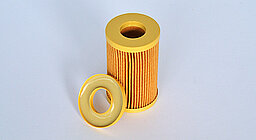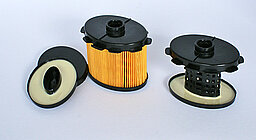Openair-Plasma® enables the rapid and cost-effective surface modification of textiles, nonwovens or films
Please see: FFD im Dialog 1/2010, Freudenberg Forschungsdienste KG
When textiles are treated with atmospheric plasma, it is especially important that knitted fabrics are activated uniformly, across their entire surface and in their entire structure.
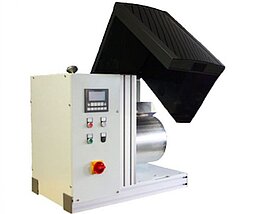
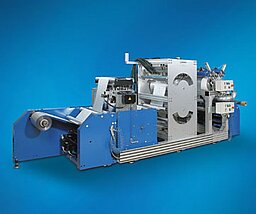
Large-width treatment with penetration – GlowPlasma - pretreatment for textiles and nonwovens before dyeing
Instead of jet technology that covers only one side, Plasmatreat has developed GlowPlasma, a process that combines plasma energy with the unique electrical design of a linear discharge station. GlowPlasma was designed for large width treatments, it penetrates deep into the pores of the textile to be treated, and initiates micro-discharges at that level. This unique plasma treatment hydrophilizes the textile and facilitates wettability with water-based processing materials in subsequent steps, such as dyeing, printing, or textile finishing.
The Plasmatreat pilot workshop includes a conveyor system with integrated GlowPlasma for treating widths up to 300 mm and processing speeds of up to 400 m/minute.
GlowPlasma to hydrophilize textiles – long-term colorfastness for textiles
From fibers and yarn to flat fabrics – here too the same requirements apply to equipment and dyeability. For example, all remaining sizing must be effectively removed without damaging the fabric.
GlowPlasma provides the same highly efficient pretreatment to fabrics as Openair-Plasma® does to yarn. After treatment with GlowPlasma, the fabric is completely hydrophilic (hydrophilization), which means that it can absorb even environmentally friendly dyes with greater surface tension and in greater quantities. The resulting coloring is especially durable and colorfast – important factors in evaluating the quality of textiles.
Absorbent nonwovens and nonwoven mats: super-absorbent without chemicals, after hydrophilization with GlowPlasma
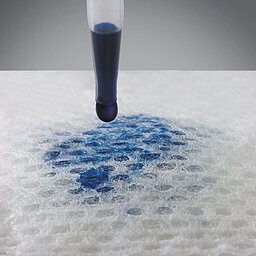
Technical nonwoven materials, such as those used in baby diapers and sanitary napkins, as well as nonwoven mats (e.g., for battery acids) require stable, long-term hydrophilic finishing, which is usually accomplished using penetration with chemical wetting agents over the whole surface. But if those wetting agents come in contact with baby’s skin or bodily fluids, irritation or skin problems often result. In the case of nonwoven mats, wetting agents often give rise to undesirable effects in contact with battery fluids.
Treatment with GlowPlasma now makes it possible for the first time to completely hydrophilize nonwoven material without the use of chemical wetting agents of any kind.
Technical polymer filters: secure bonding of membranes and filter end caps without leakage
The manufacture of technical filters employs almost exclusively nonwoven mono-filament/multi-filament filter material, which is made of plastic such as polypropylene, polyamide or polyester and/or polymer impregnated papers. This material is processed to make filter membranes, which must then be sealed to filter end caps. However, the hydrophobic properties of these plastics make secure bonding without leakage difficult. Leakage indicates puncture in the membrane, making it unusable.
Openair-Plasma® offers a highly efficient solution to this problem. Both the membranes and the polymer filter end caps are pretreated through an integrated, inline plasma process before they are connected using the filter sealing compound. Plasma pretreatment effectively increases the adhesion capacity of the polymer filter material for a trouble-free, secure bonding during sealing. The result is a high-quality filter.
